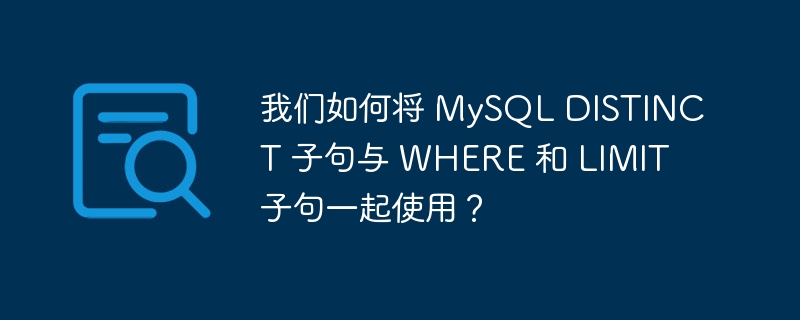
通过在 MySQL 查询中使用带有 DISTINCT 子句的 WHERE 子句,我们设置了一个条件,MySQL 根据该条件返回结果集的唯一行。通过在 MySQL 查询中使用 LIMIT 子句和 DISTINCT 子句,我们实际上向服务器提供了一个关于要返回的结果集的最大唯一行数的范围。
我们可以在名为“testing”的表上使用带有 DISTINCT 的 WHERE 和 LIMIT 子句,如下所示 -
mysql> Select * from testing; +------+---------+---------+ | id | fname | Lname | +------+---------+---------+ | 200 | Raman | Kumar | | 201 | Sahil | Bhalla | | 202 | Gaurav | NULL | | 203 | Aarav | NULL | | 204 | Harshit | Khurana | | 205 | Rahul | NULL | | 206 | Piyush | Kohli | | 207 | Lovkesh | NULL | | 208 | Gaurav | Kumar | | 209 | Raman | Kumar | +------+---------+---------+ 10 rows in set (0.00 sec) mysql> Select DISTINCT Lname from testing where Lname IS NOT NULL limit 3; +---------+ | Lname | +---------+ | Kumar | | Bhalla | | Khurana | +---------+ 3 rows in set (0.00 sec)
以上就是我们如何将 MySQL DISTINCT 子句与 WHERE 和 LIMIT 子句一起使用?的详细内容,更多请关注php中文网其它相关文章!

每个人都需要一台速度更快、更稳定的 PC。随着时间的推移,垃圾文件、旧注册表数据和不必要的后台进程会占用资源并降低性能。幸运的是,许多工具可以让 Windows 保持平稳运行。

Copyright 2014-2025 https://www.php.cn/ All Rights Reserved | php.cn | 湘ICP备2023035733号